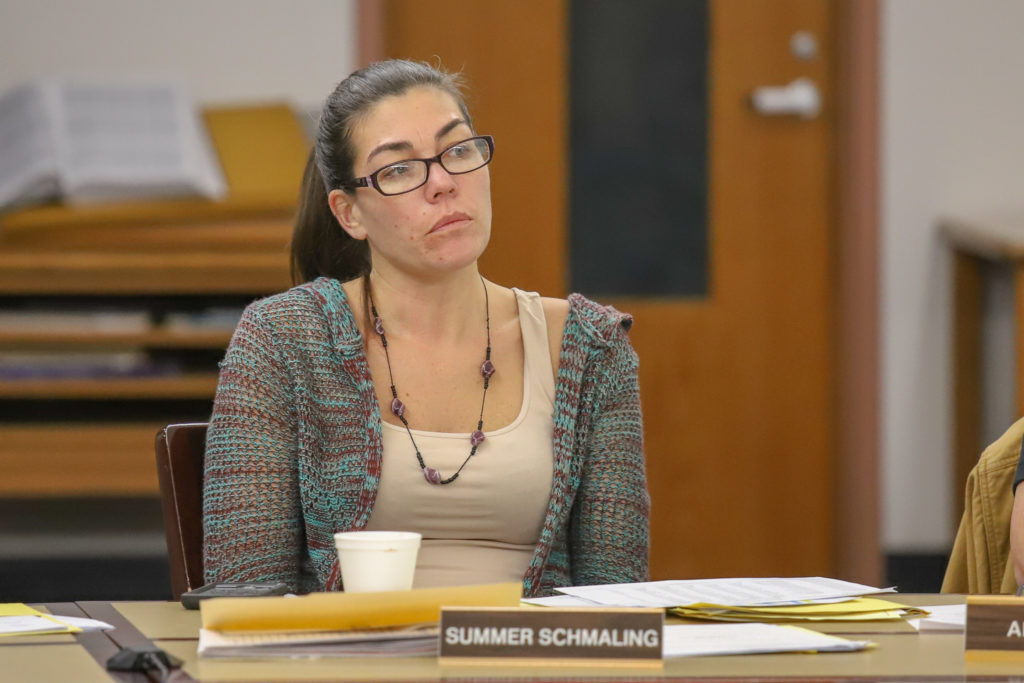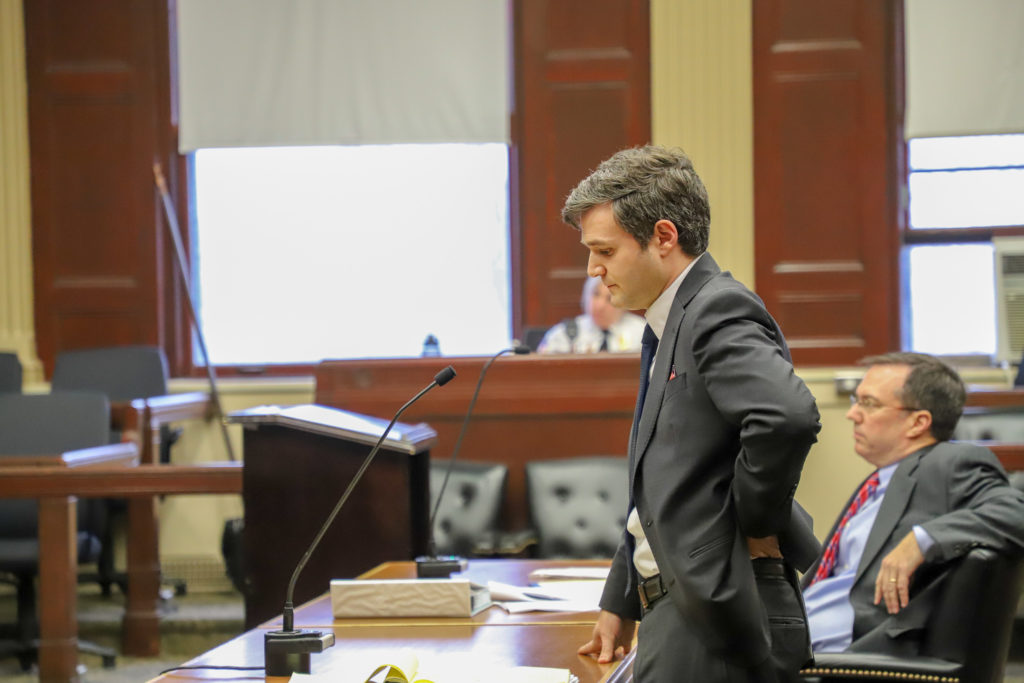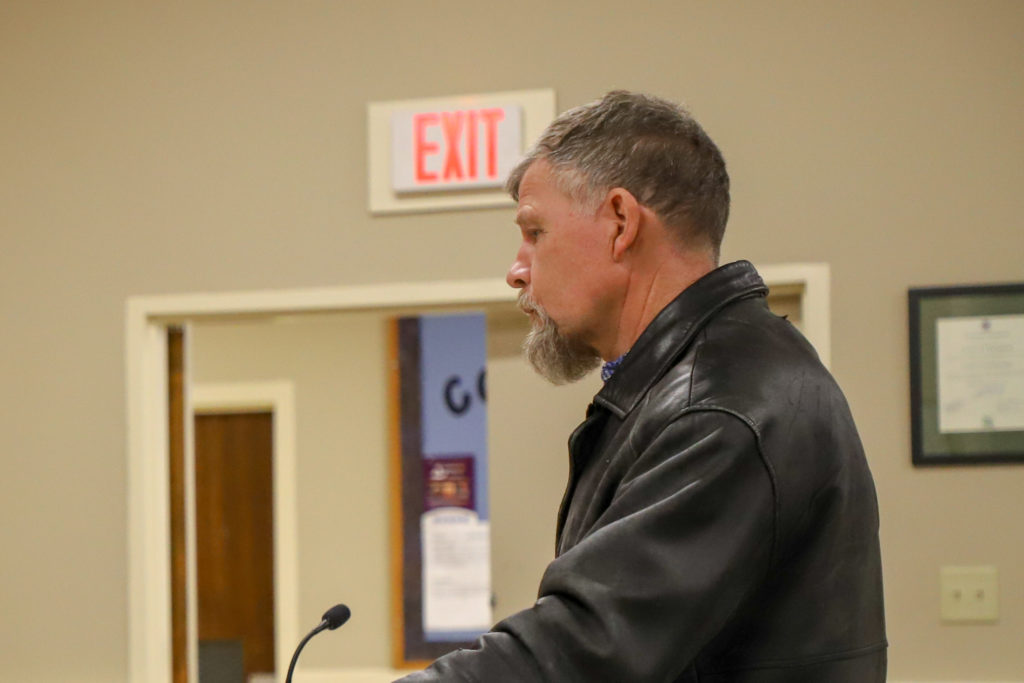
Members of the Halifax School Committee and the Silver Lake Regional School Committee met with the Halifax Finance Committee Monday, March 11, 2019. (Photo Courtesy Area58 Community Access Media)
HALIFAX – Monday, March, 11, 2019 was the first joint meeting with both the Halifax Elementary School Committee and the Silver Lake Regional School Committee to discuss the requested budgets with the Finance Committee.
The need for repairs at the elementary, middle, and high school were discussed. The chair of the Silver Lake Regional School Committee, Jason Fraser, spoke about the need to have the roofs repaired or replaced at both the middle and high school due to water infiltration issues. Due to the recent snow, the fire marshal ordered that the snow be shoveled off the roof resulting in further damage in the form of punctures to the membrane. A decision will have to be made whether to sink more dollars into repairs or replace the two roofs at a cost of 6.5 million dollars or more. Other structural renovations under consideration for the near future include HVAC work and flooring that needs to be replaced in the elementary school.
One of the largest requests from the Elementary School Committee in the operating budget is the cost of half a bus, that would increase the number of buses for the school from nine to ten. Tough decisions had to be made about five years ago that resulted in the loss of one of the school’s buses. Enrollment in the elementary school is up, however, standing at 610 from last year’s 582. Overcrowding and behavioral issues are both problems that the committee hopes can be curbed by the addition of a bus. Lengthy bus rides, sometimes as long as an hour, are likely contributing to the behavioral issues on buses.
A study conducted by a bus company two years ago to analyze routes and such in an effort to alleviate the long rides failed to yield any useful results. The finance committee and school committee discussed other approaches that may help to lessen behavioral issues including looking into what policies are in place to stop poor behavior on the bus as well as what, if any, schedule adjustments could be made to reduce the amount of time students spend sitting in the driveway of the school before being let off the bus.
While the elementary school committee noted that their requested budget was reasonable, they agreed that it is difficult to say to what extent the additional bus will alleviate the busing issues.
Both the Elementary School Committee and the Silver Lake Regional School Committee stressed to the finance committee that the school system took the brunt of the cuts last year and asked that historical context be taken into consideration when deciding what to approve in this year’s town budget. It’s in that vein that the Elementary School Committee discussed the other big-ticket item that they’re requesting in their budget – a one-time lump sum payment of nearly 70,000 dollars for textbooks. The Finance Committee acknowledged that the need for new textbooks had been placed on the back burner for several years and agreed that it was a pressing matter.
Summer Schmaling, chair of the Elementary School Committee, made a point to acknowledge the work of the PTO in funding various school projects. Likewise, school committee member Gordon Andrews credited fundraising and donations with funding the re-building of the elementary school playground in its entirety.
At the high school, a need for a new plasma table for the metal fabrication shop had been put off for several cycles. Fraser spoke to the concern that without the new table, the school could be graduating students from a program without the proper skills and knowledge to succeed in their chosen field. With Pembroke having voted to tuition in students to Silver Lake for vocational training, the need for such amenities is even more prominent.
An area of dispute at the meeting centered around the request for a school resource officer at Silver Lake Regional Middle School. As of last year, Kingston funds the high school’s resource officer as a full-time position. The newly requested position in the middle school was not listed in the requested budget but was instead added in as a warrant article. While all meeting participants were in agreement over the importance of student safety, The Board of Selectman Chair, Kim Roy, and members of the Finance Committee took issue with the request not being included in the budget and asked that the issue be taken up from scratch with Kingston, Plympton, and Halifax all weighing in on the best way to go about the creation and funding of the position.
Finance Committee member Melinda Tarsi ended the meeting by stressing, as she did throughout, that she is asking all town department heads and committees to prioritize their budget increases in order to allow the finance committee to make the most educated decisions possible regarding the town’s overall budget.


 HALIFAX — A Special Town Meeting will be held on Monday, Feb. 25, at 7:30 p.m. in the Multi-Purpose Room of the Halifax Elementary School, 464 Plymouth Street. All registered voters from the town are encouraged to attend. Residents must have registered to vote at least ten days prior to the meeting in order to participate.
HALIFAX — A Special Town Meeting will be held on Monday, Feb. 25, at 7:30 p.m. in the Multi-Purpose Room of the Halifax Elementary School, 464 Plymouth Street. All registered voters from the town are encouraged to attend. Residents must have registered to vote at least ten days prior to the meeting in order to participate.




